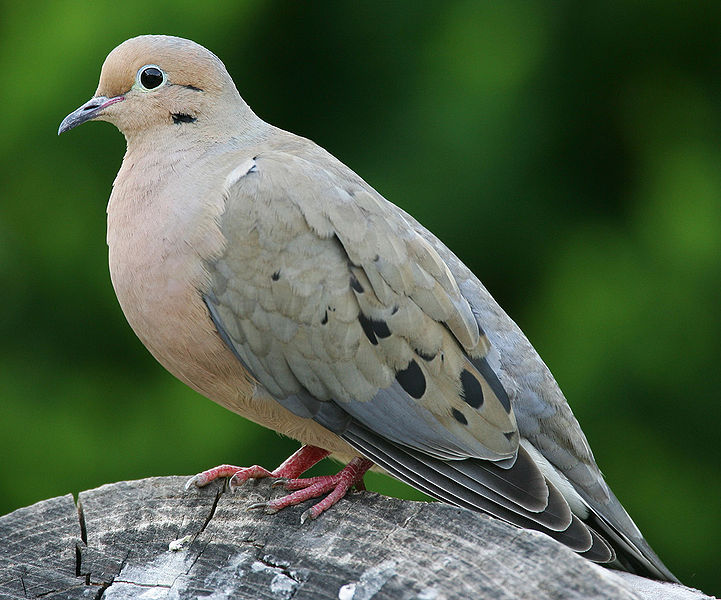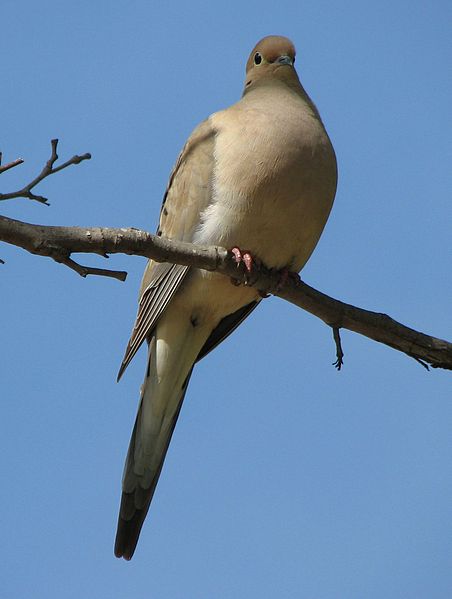mourning doveZenaida macroura
Identification:
This plump pigeon-sized bird is one of our most common in Centre County. It is a light colored warm tannish gray, with black spots on the back, a dark eye, sometimes a dark spot below the eye, and a small beak. Its long, pointed tail is especially prominent when it sits on a wire or tree branch. Behavior: The mourning dove struts along on the ground foraging for seeds, which constitute 99% of its diet. It stores many seeds at a time in its crop, and feeds its young with “crop milk.” The species is a “habitat generalist,” meaning it is quite adaptable. Its soft cooing is a familiar sound. When startled into flight, its wings make a sound that resembles the Three Stooges’ “woop woop woop.” What brings it to the SBG? Food, cover, nesting sites. The Mourning Dove can find many seeds in the Demonstration Gardens; it generally nests in trees. When can I see it? Year-round. Some Mourning Doves are partial migrants, so the birds that are seen here in winter may not be the same individuals that appear in summer. |


